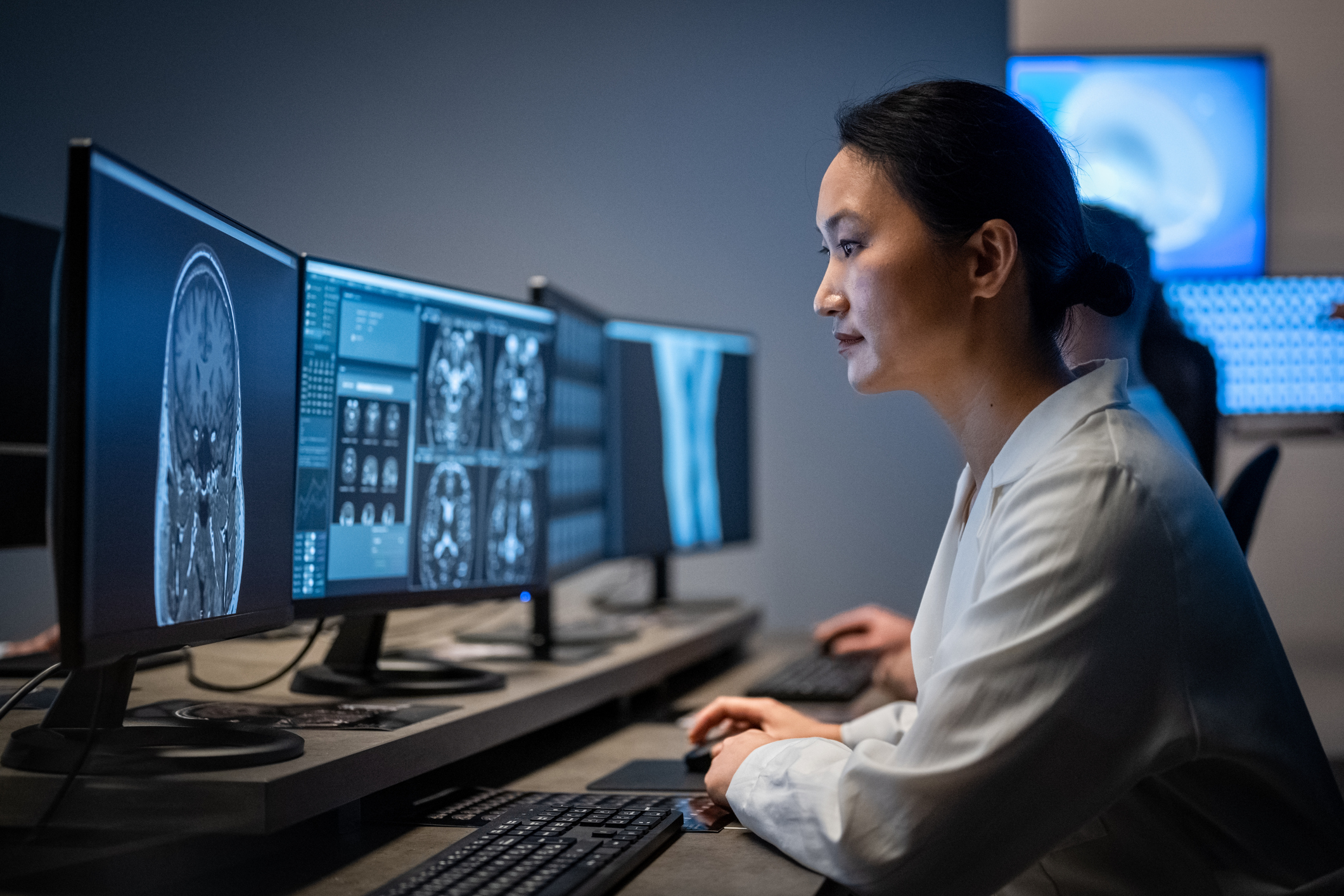In the second part of our series on AI in diagnostic imaging, we look at how advanced AI can reduce the mundane and repetitive tasks of radiology reporting. We’ll explore how AI-driven automation can assist with alleviating burnout—minimizing what radiologists can’t stand—while helping them reach new levels of accuracy, quality, and performance.
Diagnostic imaging is central to most healthcare journeys; it’s a field that’s a privilege to work in, but sometimes the workload can be overwhelming. Radiology workloads have increased by 300% over the last 15 years,1 so it’s unsurprising that 77% of practice leaders report that burnout is a problem.2
One of the major contributors to burnout is report creation, which can be full of mundane, time-consuming, low value tasks. Process inefficiencies and redundant workflows can make it difficult to stay on top of reporting workloads.
That’s why automation is so essential. When you introduce AI into radiology reporting, many tedious, repetitive tasks can be automated, reducing the time it takes to create and share each report.
Unleash the power of AI
Many radiologists already use some form of speech recognition software to dictate reports, but the latest advancements in AI-powered, cloud-based speech introduce new efficiencies.
Advanced, radiology-specific AI can help minimize the recognition errors that are common in legacy solutions and slow radiologists down with the need for constant corrections. It can also transform free-form dictation into automatically structured reports, so radiologists can dictate in their preferred way while the AI helps create a standardized report. Watch this video to see how free-form dictation becomes a structured report with PowerScribe One’s Ambient Mode.
Modern AI solutions can also minimize the need to repeatedly dictate the same values, measurements, and findings in multiple applications by automatically exchanging data across different systems. AI even has the potential to auto-generate the report impression without requiring the radiologist to re-dictate and summarize findings.
Beyond speech recognition, AI can reduce inefficiencies in other ways. It can prioritize cases to ensure the right specialist reads the right study at the right time. And AI can help optimize workload imbalances across radiology departments with smart, flexible workload distribution.
Modern AI solutions can offer in-context communication and collaboration capabilities to help significantly reduce the constant interruptions that break radiologists’ focus—phone calls, taps on the shoulder, requests for consultations, and so on.
Furthermore, AI solutions can provide real-time clinical intelligence, quality alerts, and decision support, so downstream care teams get high-quality, actionable reports when they need them.
Next-generation radiology reporting in action
Open System Imaging (OSI), a diagnostic imaging company that reads studies in five facilities across California, offers a great example of how AI radically improves efficiency in radiology reporting.
Radiologists at OSI were spending hours every day correcting reports created by out-of-date speech recognition software that struggled with specialist medical terminology. But after implementing purpose-built speech recognition with PowerScribe One, the team can work faster—and smarter—without sacrificing reporting quality.
Dr. Patrick Browning, Northern California Medical Director at OSI, estimates he’s working 50% faster thanks to the increased accuracy of PowerScribe One. “Its level of accuracy for all sorts of different medical terms is a huge time saver; there are fewer corrections and there’s less training time,” he says.
Importantly, it’s not just reporting turnaround times that have improved — quality has also.
“Radiologists are judged not just by their accuracy, but by how the reports read and how clinically useful they are to the clinician,” explains Dr. Browning. “PowerScribe One’s AI-powered language understanding interprets what I’m dictating and prompts me when I use phrases such as ‘pulmonary nodules,’ so I can automatically add in clinical guidelines to give referring physicians a more complete report.”
As Dr. Browning says: “I think PowerScribe One is one of the best tools out there. It helps me get back to what I love about radiology— partnering with referring physicians to make a diagnosis and help patients get the best care possible.”
Next time: Using AI to surface what radiologists can’t see
In the next article in this series exploring the power and potential of AI in radiology, we’ll look at how AI helps radiologists by seeing the things humans can’t and providing timely access to relevant information.
1 Bruls, R.J.M., Kwee, R.M. Workload for radiologists during on-call hours: dramatic increase in the past 15 years. Insights Imaging 11, 121 (2020). https://doi.org/10.1186/s13244-020-00925-z.
2 Parikh JR, Wolfman D, Bender CE, Arleo E. Radiologist Burnout According to Surveyed Radiology Practice Leaders. J Am Coll Radiol. 2020 Jan;17(1 Pt A):78-81. doi: 10.1016/j.jacr.2019.07.008. Epub 2019 Aug 6. PMID: 31398308.







